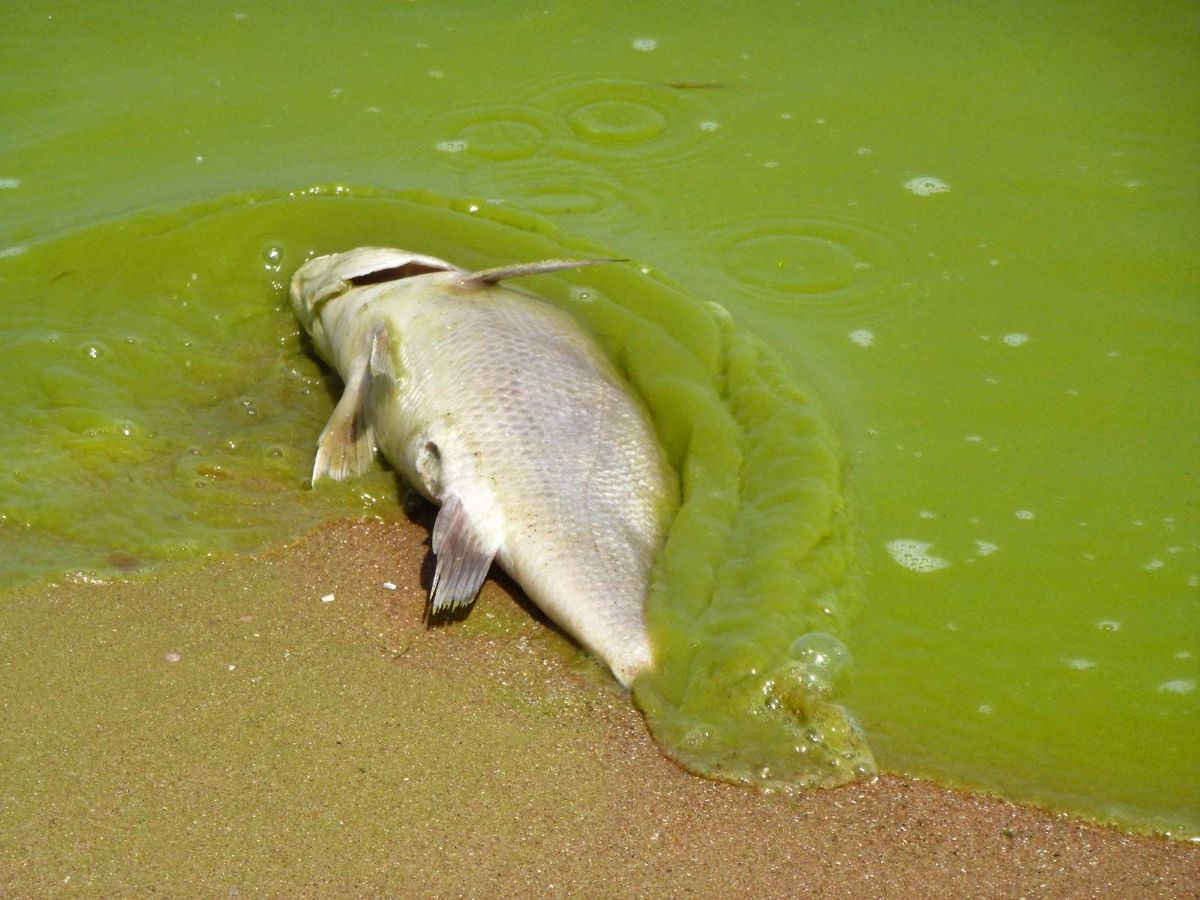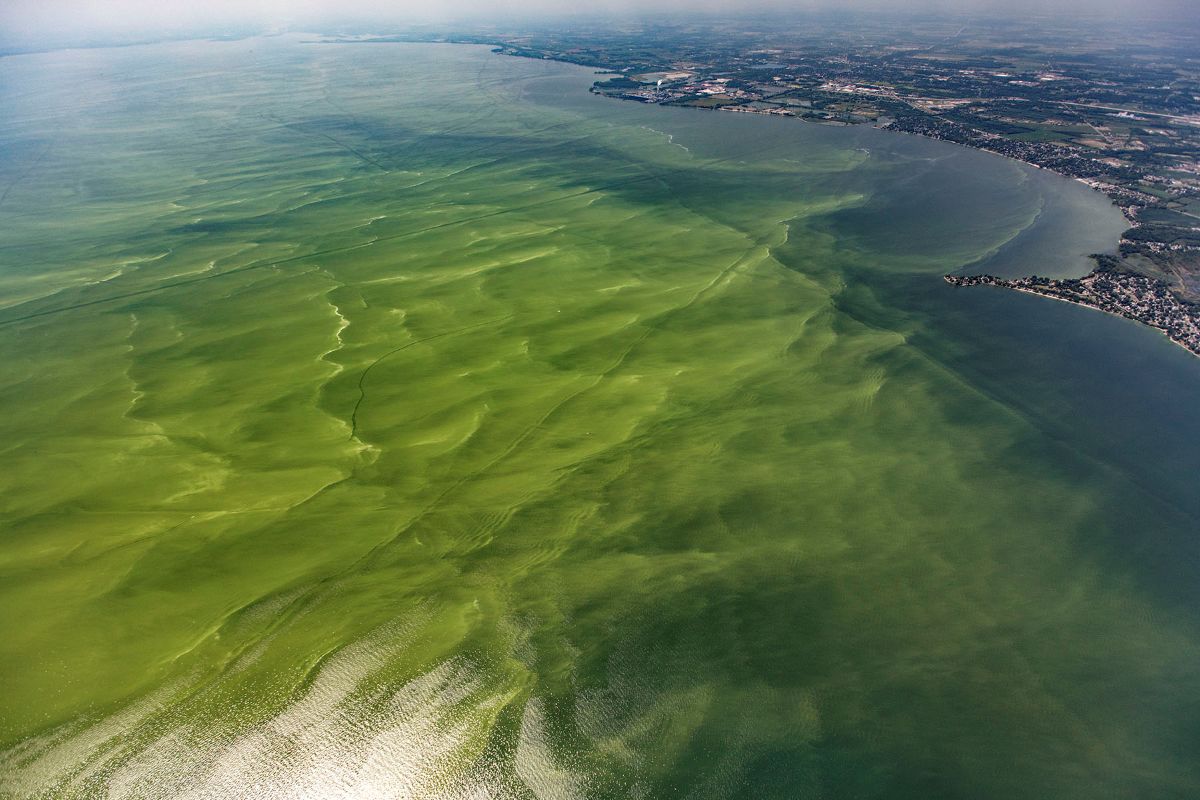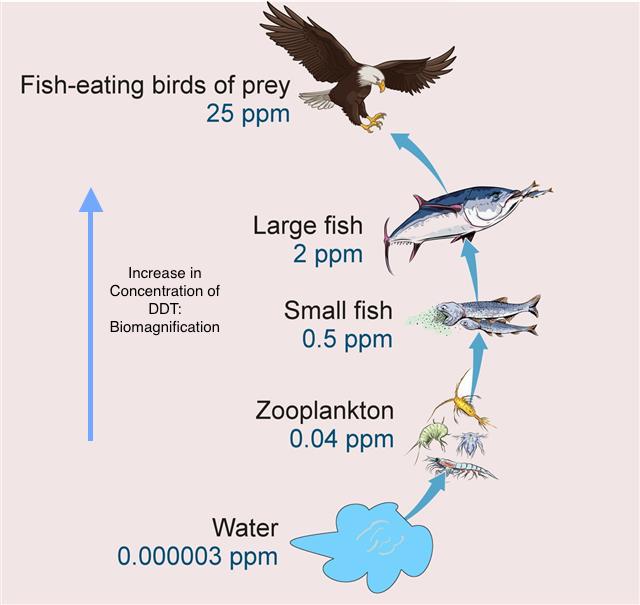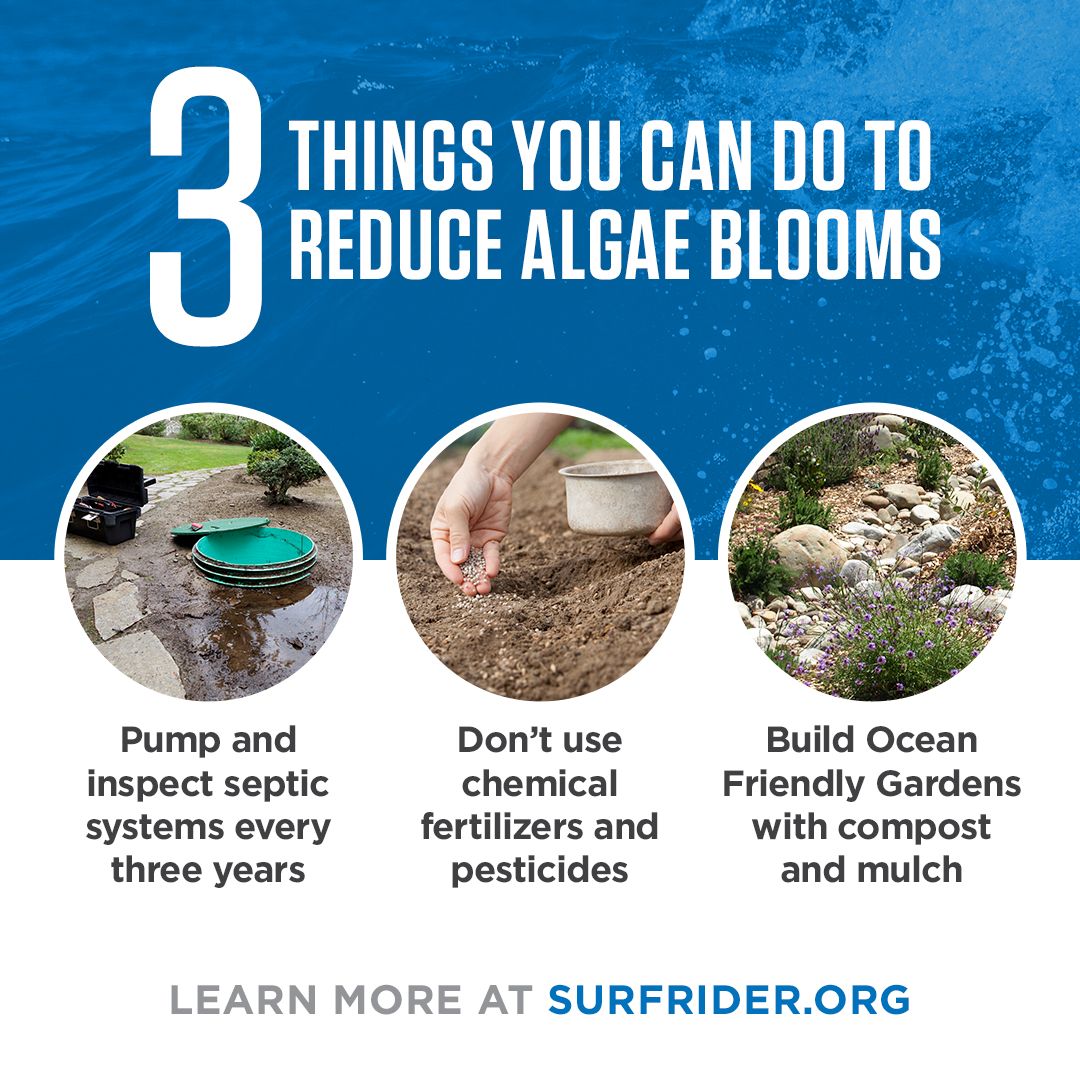
Watch short for this article (5 slides)
When Water Turns Toxic: Understanding the Causes and Devastating Impacts of Harmful Algal Blooms
The serene surface of a lake or coastal bay can sometimes hide a potent danger: harmful algal blooms (HABs), commonly known as toxic algae. These blooms, often appearing as thick mats, scum, or discolored water (ranging from green and blue-green to red or brown), are not just unsightly. They can produce powerful toxins capable of sickening or killing wildlife, domestic animals, and even humans. Recent events, such as the suspected link between toxic algae and the deaths of wild burros in Death Valley National Park, underscore the growing threat these blooms pose to ecosystems worldwide. This article explores the complex causes behind HAB proliferation, the mechanisms through which they harm wildlife, specific examples of their impact, and the crucial strategies needed for mitigation and management.

What Exactly Are Harmful Algal Blooms?
Algae and cyanobacteria (often called blue-green algae) are simple photosynthetic organisms naturally present in aquatic ecosystems, forming the base of the food web. A "bloom" occurs when these organisms experience rapid growth, leading to unusually high concentrations. However, not all blooms are harmful.
- Harmful Algal Blooms (HABs): This term specifically refers to blooms that produce toxins detrimental to aquatic life, terrestrial animals, or humans. It can also refer to blooms that, while non-toxic, cause severe ecological damage, such as oxygen depletion.
- Key Organisms:
- Freshwater HABs: Primarily caused by cyanobacteria (e.g., *Microcystis*, *Anabaena/Dolichospermum*, *Planktothrix*, *Aphanizomenon*). These can produce potent liver toxins (hepatotoxins like microcystins, cylindrospermopsin), nerve toxins (neurotoxins like anatoxins, saxitoxins), and skin irritants (dermatotoxins).
- Marine HABs: Often caused by dinoflagellates (e.g., *Karenia brevis* causing Florida "Red Tides", *Alexandrium* causing Paralytic Shellfish Poisoning) or diatoms (e.g., *Pseudo-nitzschia* causing Amnesic Shellfish Poisoning). These produce various potent toxins like brevetoxins, saxitoxins, and domoic acid.
Understanding the distinction between benign blooms and toxin-producing HABs is crucial for risk assessment and management.
Recipe for Disaster: What Fuels Toxic Algal Blooms?

The proliferation of HABs is typically driven by a combination of environmental factors, many exacerbated by human activities:
- Nutrient Pollution (Eutrophication): This is often the most significant controllable factor. Excess nitrogen (N) and phosphorus (P) act like fertilizer for algae and cyanobacteria. Key sources include:
- Agricultural Runoff: Fertilizers applied to crops, animal manure from livestock operations washing into streams and rivers during rainfall.
- Wastewater Treatment Outflows: Even treated sewage can contain residual N and P if advanced nutrient removal processes aren't in place. Leaking septic systems are also contributors.
- Urban Stormwater Runoff: Lawn fertilizers, pet waste, and other pollutants washed off impervious surfaces (roads, roofs) into waterways.
- Industrial Discharges: Certain industries release nutrient-rich wastewater.
This excess nutrient load disrupts the natural balance, allowing fast-growing algae/cyanobacteria to outcompete other aquatic plants and organisms.
- Warm Water Temperatures: Many HAB-forming species thrive in warmer conditions. Climate change is leading to higher average water temperatures globally, extending the growing season for algae and potentially favoring toxic strains over non-toxic ones. Warmer water also contributes to thermal stratification (see below). (EPA - Climate Change and HABs)
- Water Column Stability (Stratification) & Stagnant Water: Calm, sunny weather allows water bodies to stratify, forming distinct layers with warmer, less dense water on top. Many buoyant cyanobacteria can regulate their position in this stable upper layer, maximizing sunlight exposure and outcompeting other phytoplankton that might sink. Lack of mixing prevents dilution and allows blooms to become highly concentrated. Reduced flows from drought or water management practices (dams) can exacerbate stagnation.
- Sunlight Availability: As photosynthetic organisms, algae and cyanobacteria require sunlight. Clearer water (sometimes ironically caused by invasive filter feeders like zebra mussels removing competing phytoplankton) or calm conditions allowing surface scum formation can enhance light availability for bloom-formers.
- Changes in Water Chemistry: Factors like altered salinity levels (in estuaries), shifts in pH, or changes in the availability of trace metals can sometimes influence which algal species dominate.
Mechanisms of Harm: How HABs Wreak Havoc

The detrimental effects of HABs extend through multiple pathways:
1. Toxin Production and Exposure
HABs can produce a wide array of potent toxins affecting different organ systems:
| Toxin Class | Example Toxins | Primary Target Organ/System | Common Producing Organisms (Examples) |
|---|---|---|---|
| Hepatotoxins | Microcystins, Nodularins, Cylindrospermopsin | Liver (can also affect kidneys, other organs) | *Microcystis*, *Planktothrix*, *Anabaena/Dolichospermum*, *Cylindrospermopsis* |
| Neurotoxins | Anatoxin-a, Saxitoxins (PSP toxins), Domoic Acid (ASP toxin), Brevetoxins (NSP toxins) | Nervous System | *Anabaena/Dolichospermum*, *Aphanizomenon*, *Alexandrium*, *Pseudo-nitzschia*, *Karenia* |
| Dermatotoxins | Lyngbyatoxin-a, Aplysiatoxins | Skin, Mucous Membranes | *Lyngbya* (now *Moorea*), *Oscillatoria* |
Animals can be exposed through:
- Ingestion: Drinking contaminated water (a major risk for terrestrial animals like dogs, livestock, and potentially the Death Valley burros), consuming toxin-laden prey (bioaccumulation), or directly ingesting algal scum.
- Inhalation: Breathing aerosolized toxins near breaking waves during marine blooms (e.g., Florida red tide).
- Direct Contact: Skin irritation from contact with certain types of blooms.
Toxins can bioaccumulate and biomagnify, concentrating as they move up the food chain. Filter feeders like shellfish can accumulate high levels of marine toxins (saxitoxin, domoic acid), poisoning animals (sea lions, birds) and humans who consume them.
2. Oxygen Depletion (Hypoxia/Anoxia)
When dense blooms eventually die off, they sink and are decomposed by aerobic bacteria. This decomposition process consumes vast amounts of dissolved oxygen in the water. If oxygen levels drop too low (hypoxia) or reach zero (anoxia), fish, shellfish, and other aquatic organisms cannot survive, leading to massive fish kills and the creation of "dead zones." The Gulf of Mexico dead zone, fueled largely by nutrient runoff from the Mississippi River, is a prime example.
3. Physical Impairment and Habitat Degradation
Extremely dense blooms can physically clog the gills of fish and invertebrates, hindering respiration. They can also block sunlight from reaching submerged aquatic vegetation, killing off essential habitat for juvenile fish and other species. Thick surface scums can also impede water birds.
Case Files: Wildlife Falling Victim to HABs
The impacts of HABs on wildlife are diverse and increasingly documented:
- Death Valley Burros (California, 2024): The mysterious deaths of at least 11 federally protected wild burros prompted investigation, with water sources contaminated by toxic cyanobacteria strongly suspected as the cause pending final analysis. This highlights the risk to terrestrial mammals relying on isolated water sources during dry periods. (NPS Death Valley News Release)
- California Sea Lions & Marine Mammals (US West Coast, Ongoing): Thousands of sea lions, dolphins, and whales have suffered neurological damage (seizures, disorientation, strandings, death) due to poisoning by domoic acid, a potent neurotoxin produced by the diatom *Pseudo-nitzschia*. The toxin accumulates in sardines, anchovies, and other prey consumed by marine mammals. (NOAA Fisheries - Domoic Acid FAQs)
- Florida Manatees (Florida Coast): Manatees are susceptible to brevetoxins produced by *Karenia brevis* (Florida red tide). They can inhale airborne toxins near blooms or consume seagrass coated with toxic cells, leading to respiratory distress, seizures, and death.
- Fish Kills (Global): Massive fish die-offs due to HAB-induced hypoxia are common globally, from the Great Lakes and Gulf of Mexico to coastal areas worldwide. Direct toxicity also contributes.
- Water Birds (Various Locations): Birds can be affected by consuming toxic prey, drinking contaminated water, or through secondary effects like avian botulism outbreaks often linked to decaying algal biomass in warm, anoxic conditions.
- Domestic Animals (Especially Dogs): Dogs are highly vulnerable to poisoning from cyanotoxins after swimming in or drinking from contaminated lakes or ponds. Symptoms can appear rapidly and include vomiting, diarrhea, lethargy, staggering, seizures, and often death.
Turning the Tide: Strategies for Mitigation and Management

Addressing HABs requires a multi-pronged approach focusing on both prevention and response:
- Nutrient Reduction (The Long-Term Solution): Reducing the amount of nitrogen and phosphorus entering waterways is paramount. This involves:
- Sustainable Agriculture: Implementing practices like precision fertilizer application (matching nutrients to crop needs), planting cover crops to prevent soil erosion and nutrient loss, establishing vegetative buffer strips along waterways to filter runoff, and better management of animal manure.
- Upgraded Wastewater Treatment: Investing in advanced (tertiary) treatment technologies to remove N and P from municipal and industrial wastewater.
- Stormwater Management: Utilizing green infrastructure (rain gardens, permeable pavements, wetlands restoration) in urban areas to capture, treat, and slow down stormwater runoff.
- Septic System Maintenance: Regular inspection and maintenance of septic systems to prevent leakage.
- Monitoring, Forecasting, and Early Warning: Implementing robust monitoring programs using satellite imagery, field sampling (water quality testing for nutrients, algal counts, toxin levels), and automated sensors (buoys) allows for early detection and forecasting of blooms. This enables timely public health advisories. (NOAA - What is a HAB? provides overview of monitoring).
- In-Water Body Management (Often Short-Term/Localized): Various techniques can sometimes be used to control existing blooms, though they often have limitations and potential side effects:
- Algaecides (e.g., copper sulfate): Can kill algae but may release toxins from dying cells and harm non-target organisms.
- Nutrient Inactivation (e.g., alum application): Binds phosphorus, making it unavailable to algae, but can be costly and affect water chemistry.
- Artificial Circulation/Aeration: Mixes water layers to disrupt stratification and limit surface scum formation.
- Ultrasonic Devices: Emerging technology aiming to disrupt algal cells.
- Public Awareness and Advisories: Educating the public about identifying potential HABs, the risks involved (especially for pets and children), and the importance of reporting sightings. Issuing timely warnings, closing recreational waters, and posting advisory signs are critical public health measures.
Climate Change: A Threat Multiplier
Climate change is undeniably exacerbating the HAB problem. Warmer waters favor bloom formation, altered precipitation patterns (more intense rainfall) increase nutrient runoff events, and rising CO2 levels may potentially favor some cyanobacteria. Addressing the root causes of climate change through reduced greenhouse gas emissions is therefore also a long-term strategy for mitigating HABs.
Conclusion: A Call for Action on Water Quality
Harmful algal blooms are complex environmental problems fueled significantly by human activities, particularly nutrient pollution, and amplified by climate change. The deaths of the Death Valley burros, the suffering of California sea lions, and countless other wildlife impacts serve as potent warnings. Protecting wildlife, public health, and aquatic ecosystems requires a concerted, sustained effort focused on reducing nutrient inputs at their source, investing in robust monitoring and forecasting systems, and taking climate action. Only through proactive, science-informed management can we hope to curb the growing threat of toxic algae and restore health to our vital waterways.